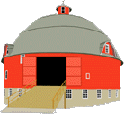SEGMENT: FENCES, FARM WORK, & ENVIRONMENT
Bert Aikman>UIS Collection A's>UIS Collection, Segment 7
| <-Previous Segment | Next Segment-> |
- FENCES
- Pin oak was a good wood for rails. Black-jack oak was not liked because it would out-grow everything else. Discusses rail fences & making of rails. States his family worked in other people's timber. Different trees used to make different items. Pin-oak & black-oak used for rails. White-oak & burr-oak used for posts. Pickets made from any available oak, usually black-oak because it was less valuable. Mentions demand for rails for fences. Building rail fences was an art. Describes method for building rail fences & need for good top rail.
- ENVIRONMENT
- Timber determined where settlers decided on land to farm. Government charged $0.12/acre if you stayed on it for 5 years. Describes need to clear & drain land, particularly swampland. Describes swamp soil as good topsoil.
- FARM WORK
- Describes how fence rails were made using wedge & maul. Rails were 10ft, while posts were about 6.5ft. Posts made of white oak would last a long time. Mentions a "hog-man" he worked for setting posts. Describes planting & cultivating of Bois d'Arc [Osage orange] for hedgerows. Bert believes Bois d'Arc grew wild in TX & was brought north. Hedgerow trimmed 3 times a year. Mentions nurseries for Bois d'Arc when there was a demand for hedgerows. Osage orange hedgerows were so strong they had to be bulldozed to be removed.

